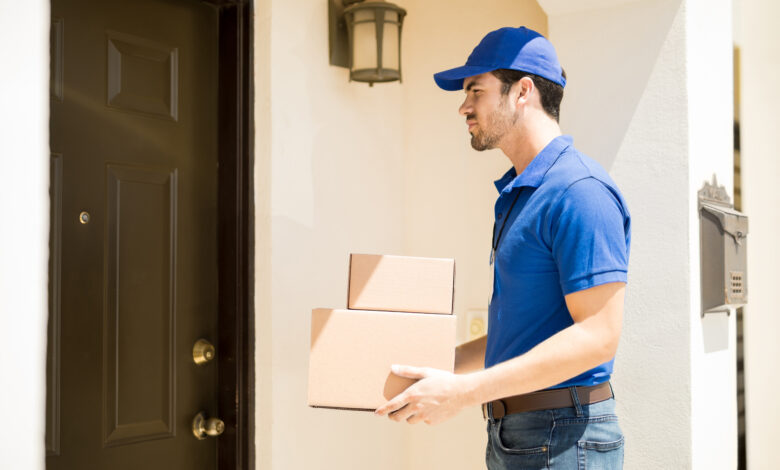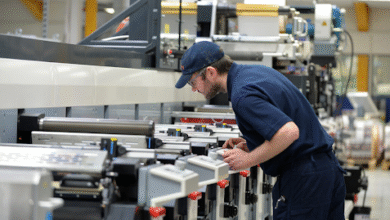How Urban Growth Is Shaping the Future of Delivery Infrastructure

The population of the urban UK is growing. This is driving demand for faster and more efficient delivery services. Traffic jams and lack of parking are significant obstacles. But drone delivery, optimal route planning, and other technologies are reshaping last-mile delivery services.
Cities are growing denser, and the delivery infrastructure is failing to keep up. More than 25% of the parcel deliveries in the UK were delayed in 2023. In the same year, one in three UK citizens faced delayed letters, which led to people missing fines, bills, and health appointments. So, the delivery infrastructure is being transformed today.
The expanding urban population, like in London, is driving demand for more efficient and faster deliveries. Keep reading to learn more about how logistics networks, delivery models, and technology adoption are being influenced by urbanisation.
The Urban Growth Trend: Numbers That Matter
The population of the UK is growing. It is expected to go from around 67 million in 2020 to almost 72 million in 2032. And the population growth is further driving urbanisation, which is reshaping the delivery infrastructure in the UK. There is an increased call for e-commerce and last-mile shipping options.
The last-mile delivery industry of the UK is expected to exceed a revenue of $10,500 million by 2030. The industry is also projected to grow at a compound annual growth rate of around 7.5% between 2024 and 2030.
Last-mile Delivery Challenges in Dense Cities
Last-mile delivery in dense cities requires navigating a number of hurdles. Some of such obstacles faced by London courier service providers include traffic congestion, limited parking spots, and tight delivery windows. A combination of these factors leads to delays as well as increased delivery costs.
The growing demand for transparency and speed in delivery services is further intensifying the challenges. Customers today also expect reliable delivery and accurate estimations of arrival time. They are also expecting real-time tracking and the use of low-emission vehicles for deliveries.
It is also difficult to manage multiple delivery stops within tight schedules in urban environments. It requires efficient and complex route planning. Another challenge that a London distribution company faces is to scale efficiently as order volumes increase.
Micro-fulfilment Centres & Local Warehousing
Growing urbanisation is also driving the rise of Micro-Fulfilment Centres (MFCs) and local warehousing. This is helping reduce the time needed for deliveries. It is expected that there will be more than 7200 automated MFCs in the UK by late 2030.
The MFCs are mini but favourably positioned warehouses in cities. These are the reasons you can enjoy same-day delivery, as they close the distance between you and the inventory. Many London courier service providers are also deploying automation technologies in MFCs. It is helping them with faster and more efficient fulfilment of online orders.
Amazon Hubs are an example of strategically placed pickup points. You can collect their online order from there. There is also the rise of dark stores, which are regular stores repurposed into fulfilment centres. There are currently 200 dark stores in the UK, and the number is expected to reach 1500 by 2030.
You will also find automated storage and retrieval systems known as grocery fulfilment pods, from where you can pick up your orders quickly.
Tech Innovations Transforming Urban Delivery
You will find significant transformations in urban delivery systems today. It has become common to find a London distribution company integrating various technology innovations in its delivery process.
For example, autonomous delivery robots and drones are transforming how items are transported. They have made it possible to deliver time-sensitive packages quickly in traffic-congested urban areas. The reliance on labour is also cut.
Smart lockers are revolutionising how you receive your orders. And Artificial Intelligence (AI) is proving to be useful in predicting demand and optimising routes.
Sustainable Delivery Solutions
You can experience a shift towards sustainable delivery solutions in the urban UK. This shift is led by the rise of Electric Vehicles (EVs) and electric cargo bikes. The implementation of emission-controlled zones has also driven the adoption of sustainable delivery solutions.
Major cities in the UK are introducing Low-Emission Zones (LEZs) and Zero-Emission Zones (ZEZs). So, the more polluting older vehicles are not allowed to access the LEZs. And vehicles have to be completely emission-free to enter ZEZs. There are also financial incentives available for any London distribution company investing in EVs and sustainable transport infrastructure.
Policy & Infrastructure Support
You will find a variety of smart city initiatives in the UK today. Focus is placed on dedicated infrastructure and digital solutions. For example, you will find dedicated delivery lanes to help delivery vehicles avoid heavy road traffic. So, you can get the orders delivered to your doorstep faster.
Digital permitting systems have also made it easier to obtain delivery permits. Real-time traffic monitoring and adaptive traffic control technologies are helping optimise the flow of vehicles, which is further reducing shipping delays. Moreover, smart parking systems are also gaining popularity. Drivers no longer have to waste time looking for a spot.
Final Thoughts?
Urbanisation has called for faster and more efficient shipping. But traffic congestion and limited parking space make it challenging to deliver orders timely and efficient manner in urban settings. However, you can see several transformations in the last-mile delivery industry of the UK today.
From setting up local warehouses to utilising drones, technologies are being used to reshape delivery processes. Optimal path planning and EV fleet are also making delivery sustainable. If you want to experience the improvement first-hand, try a London courier service for your shipping needs today!



